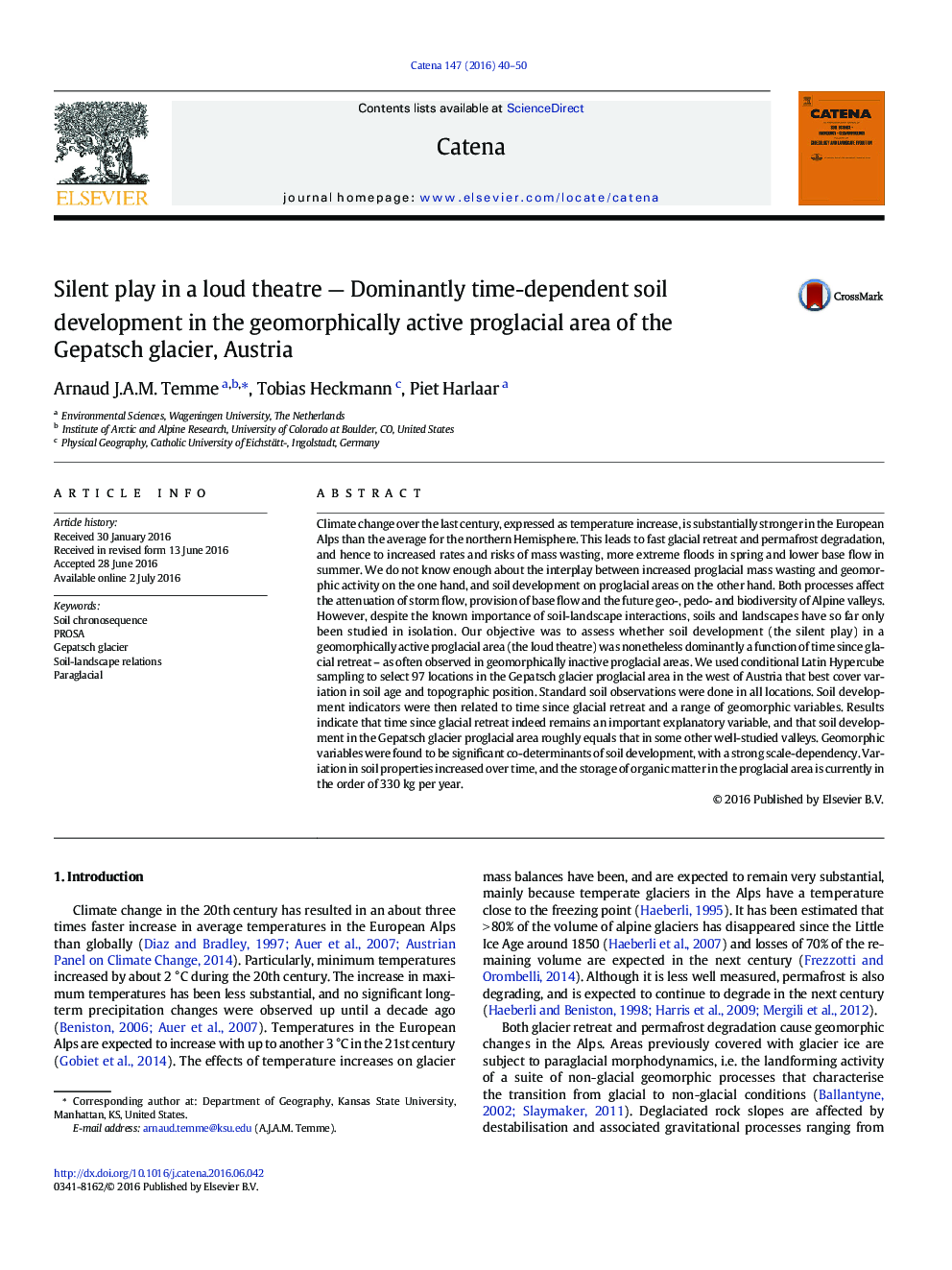| Article ID | Journal | Published Year | Pages | File Type |
|---|---|---|---|---|
| 6407686 | CATENA | 2016 | 11 Pages |
â¢Slow time-dependent soil development remains visible in geomorphically active proglacial area.â¢Traditional soil-mapping approach using terrain variables indicates strong scale effect.â¢Soils in eroding positions have higher pH and lower amount of organic matter.â¢Soils in deposition positions vary strongly in pH and organic matter.â¢Storage of organic matter is in the order of one tenth of a gram per square meter per year.
Climate change over the last century, expressed as temperature increase, is substantially stronger in the European Alps than the average for the northern Hemisphere. This leads to fast glacial retreat and permafrost degradation, and hence to increased rates and risks of mass wasting, more extreme floods in spring and lower base flow in summer. We do not know enough about the interplay between increased proglacial mass wasting and geomorphic activity on the one hand, and soil development on proglacial areas on the other hand. Both processes affect the attenuation of storm flow, provision of base flow and the future geo-, pedo- and biodiversity of Alpine valleys. However, despite the known importance of soil-landscape interactions, soils and landscapes have so far only been studied in isolation. Our objective was to assess whether soil development (the silent play) in a geomorphically active proglacial area (the loud theatre) was nonetheless dominantly a function of time since glacial retreat - as often observed in geomorphically inactive proglacial areas. We used conditional Latin Hypercube sampling to select 97 locations in the Gepatsch glacier proglacial area in the west of Austria that best cover variation in soil age and topographic position. Standard soil observations were done in all locations. Soil development indicators were then related to time since glacial retreat and a range of geomorphic variables. Results indicate that time since glacial retreat indeed remains an important explanatory variable, and that soil development in the Gepatsch glacier proglacial area roughly equals that in some other well-studied valleys. Geomorphic variables were found to be significant co-determinants of soil development, with a strong scale-dependency. Variation in soil properties increased over time, and the storage of organic matter in the proglacial area is currently in the order of 330Â kg per year.
